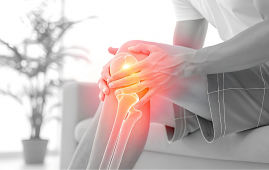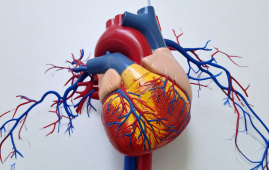

According to government data, fatigue was a role in 1,195 collisions in 2021, but there is a lack of knowledge on what OSA sufferers – a demographic at elevated risk of driver sleepiness – should do if they feel fatigued while driving. Professor Ashleigh Filtness, a specialist in Transport, Human Factors, and Sleep Science in the School of Design and Creative Arts, will assess the effectiveness of a ‘caffeine naps’ – in which drivers have a caffeinated drink and a 15-minute nap – as a countermeasure to driving tiredness in OSA patients.
The Road Safety Trust-funded initiative will produce an evidence-based guideline for best practice, which will subsequently be distributed to OSA patients, clinicians, and the Driver and Vehicle Standards Agency (DVSA).
“Sleepiness is a natural part of everyday life,” stated Professor Filtness. Everybody gets fatigued every day, thus every motorist should know what to do if they get tired while driving.
“Having a caffeinated drink and a 15 minute nap, if possible, helps to temporarily alleviate tiredness. This countermeasure of a ‘caffeine naps’ has been evaluated in laboratory settings, however, it is not known how or if drivers put this advice into practice in the real world.
“Additionally, while this advice is likely to be appropriate for the vast majority of people, for some its efficacy has not been tested and it could be that alternative advice may be more effective.
“One such group is OSA patients. OSA patients would routinely be advised to sleep on their side and use a continuous positive air pressure machine while sleeping, neither of which is practical when having a nap in a vehicle.
“This project will undertake a focused investigation to develop appropriate guidance for OSA patients and their physicians. Being alert when driving is everyone’s responsibility, so it is important that we all have access to accurate information to help manage driver sleepiness.”
Sonya Hurt, chief executive of The Road Safety Trust, added: “Driver fatigue causes hundreds of collisions a year. It is a really serious issue.
“This project can play a big role in alleviating risk for drivers who suffer with OSA, through establishing the best practice for so-called caffeine naps.”
more recommended stories
 Citrus and Grape Compounds Help Prevent Type 2 Diabetes
Citrus and Grape Compounds Help Prevent Type 2 DiabetesA new clinical trial highlights the.
 Personalized Pain Care Transforms Parkinson’s Treatment
Personalized Pain Care Transforms Parkinson’s TreatmentNew UniSA research underscores the urgent.
 Genetic Diversity Explains Obesity Risk Differences
Genetic Diversity Explains Obesity Risk DifferencesCross-ancestry Study Identifies Novel Obesity Genes.
 Meniscal Tear and OA Pain Improved by Home Exercise
Meniscal Tear and OA Pain Improved by Home ExerciseHome Exercise Proves Effective for Knee.
 AI ECG Model Outperforms Standard STEMI Triage
AI ECG Model Outperforms Standard STEMI TriageNovel AI ECG Model Outperforms Standard.
 New Software Transforms Real-Time Pathogen Surveillance
New Software Transforms Real-Time Pathogen SurveillanceReal-Time Pathogen Surveillance Software Transforms Environmental.
 Bright Nights May Increase Stroke, Heart Failures in Adults
Bright Nights May Increase Stroke, Heart Failures in AdultsBright Nights are tied to increased.
 Cannabis Use Linked to Regular Tobacco in US Youth
Cannabis Use Linked to Regular Tobacco in US YouthCannabis Use and Tobacco Risk: A.
 Mediterranean Diet Reduces Endometriosis Risk in Women
Mediterranean Diet Reduces Endometriosis Risk in WomenMediterranean Diet and Endometriosis: A Promising.
 Night Shifts May Trigger Irritable Bowel Syndrome (IBS)
Night Shifts May Trigger Irritable Bowel Syndrome (IBS)Night Shifts and Digestive Health: Linking.

Leave a Comment